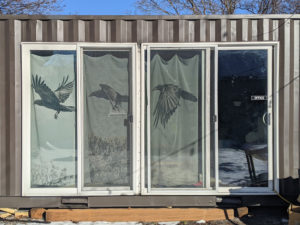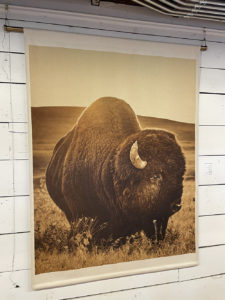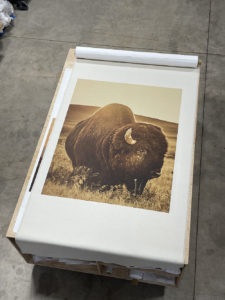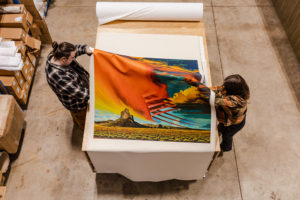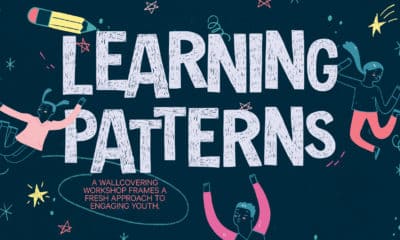THOUGH OUR TRADE is rarely viewed through this lens, digital textile printing is an artistic medium. That may be an atypical way to look at digital printing, especially if you’re an advertising-focused PSP, but it’s high time we look at – or rather respect – this technology as more than a service or commodity. Digital textile printing is a way to create.
In truth, the “digital textile printing as art” viewpoint has some serious resistance in our industry – and don’t get me wrong; I understand why. Since our discipline’s conception, engineers, dyers, printers, and manufacturing experts have been focused on selling the technology, making it accessible, and innovating the machinery and ink chemistry. Several decades in, with multiple industries from fashion to advertising having adopted the technology, we’re bound for a shift – one that takes the focus away from selling and pivots toward artistic innovation.
Our color management experts and substrate engineers have done a fantastic job teaching us how to hit Coca-Cola red and develop tightly constructed, optic white fabrics that ensure vibrancy and print clarity. We’ve got a bulletproof formula that’s made digital textile printing fundamentals comprehensive and accessible. Once mastered though, we have the unique opportunity to lean out of that formula – or, in some cases, break it altogether.
It may seem obvious or insignificant if you’re working with digital printing technology on a daily basis, but let’s not forget our industry is underground and misunderstood to most. Even for those who have a working knowledge of digital printing, it can be difficult to see how revolutionary the technology can be for other industries. If you’re comparing digital textile printing to digital desktop paper printing, the similarities are straightforward. However, if you compare digital textile printing to analog textile printing (i.e. rotary screen or flatbed printing), an entirely new workflow and creative toolkit becomes unlocked.
Sometimes the advantages and innovations can get lost on us in the printing industry, but when we’re in the position to introduce it to other industries – from fashion and interior design to the visual arts – it’s a game-changer.
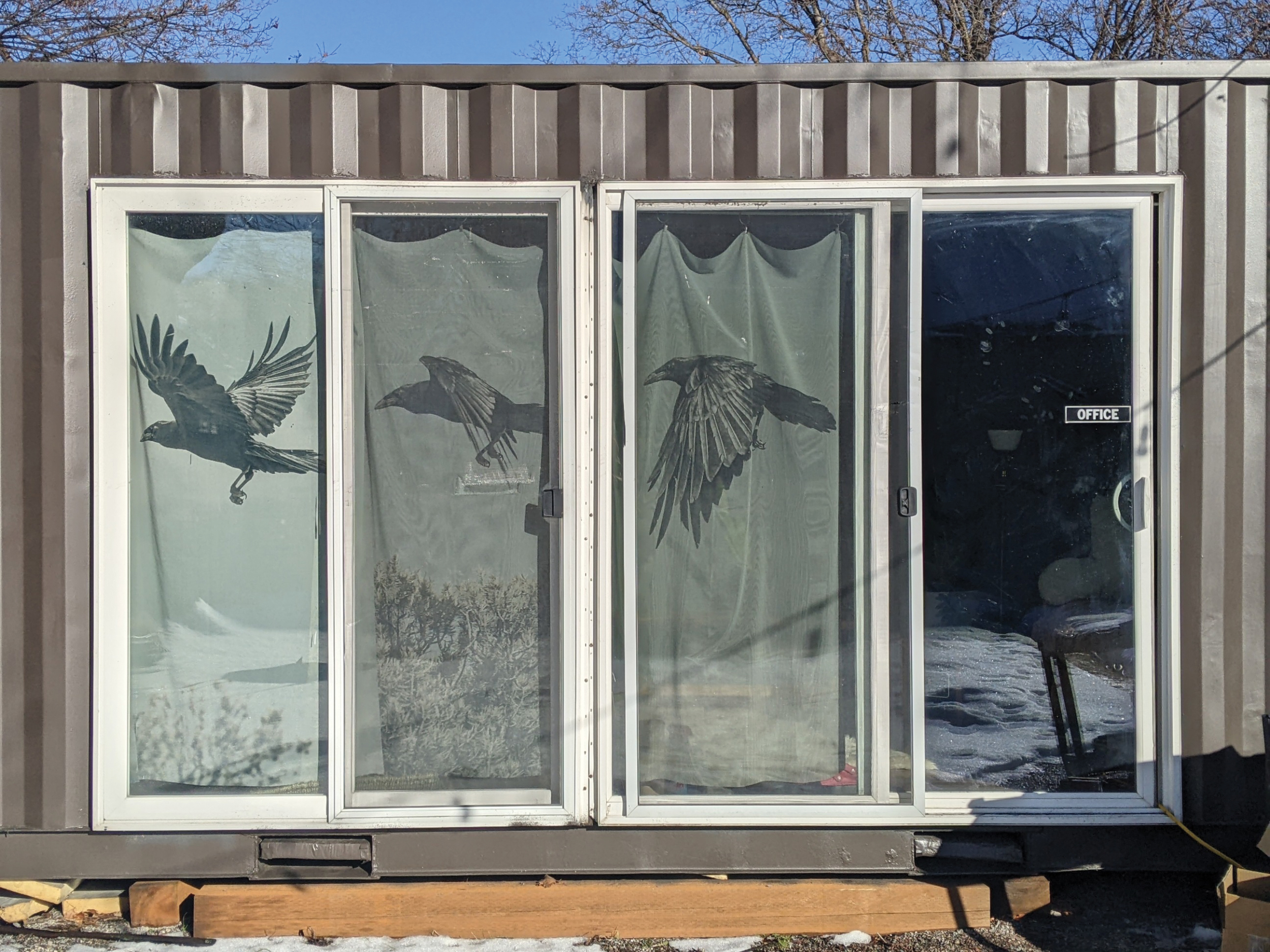
THE DIGITAL ADVANTAGES
WE (MAY) TAKE FOR GRANTED
Scale
Let’s start with what seems like a simple digital advantage: the ability to change scale at the touch of a button. Think about it. In traditional textile production (which still accounts for the majority of textile printing production today) changing the scale of a design – whether slight or dramatic – requires a new set of screens to be engraved. Depending on the number of colors in the design, the design could need up to approximately 16 screens costing anywhere from $300 to $1000 per screen. That doesn’t even include machine setup fees or minimum order requirements that usually hover between 1000 and 3000 yards.
Playing with scale – layering it or integrating different design scales into one project – is a big deal. Imagine a hospitality project where the drapery, wallcoverings, and upholstery can all feature the same motif. Our ability to alter the scale (drapery typically leans towards a larger repeat size, for example) is paramount. Add the ability to easily integrate multiple colorways and all of a sudden you’ve created a design impossible without digital technology. For artists and designers, this is the golden ticket.

Ravens by Erika Peterman exemplifies how digital printing has transformative qualities for both the photographs and space. Printed on sheer polyester and achieving approximately 85 percent print-through, the fluidity of the lightweight textile allows the photos to exist in a brand new way.
Affordability & Accessibility
Analog textile printing can be cost prohibitive and digital processes make it affordable, attainable, and accessible. Prototyping alone (even if you’re going into analog production overseas) becomes much easier and less risky. In my experience, one of the greatest delights and honors of being in the digital textile printing industry is introducing the technology to artists and designers. Illustrating a new way for them to create and innovate never gets old, and I doubt it ever will.
Unlimited Color Gamut
On the topic of color, having a virtually unlimited gamut is the pièce de résistance. It’s pretty self-explanatory, I know, but let’s make sure we never lose sight of the fact this has changed design across the board. We may know this fact like the back of our hands, but many companies and brands still haven’t delved into the technology and integrated a larger color gamut into their designs. It’s never a bad thing to highlight this digital printing technology virtue, especially with new customers.
Advertisement
Integrating Photographs or Photographic Elements
Building on the fact that our color gamut is limitless, the ability to print photographs is truly cutting edge. Even with the most sophisticated screen systems, like Galvano screens, printing photographs is an impossibility. Though arguably still in its infancy, digitally printing photographs on textiles is an extraordinary capability, which is why we’ve seen so many companies and print shops focus their entire business model around this print product.
Of course, it can be as simple (and consistently awe-inspiring) to print photographs on textiles, but the next compelling design evolution of the technology is to incorporate photographic elements into both repeat and placement prints. Textile designers, contemporary artists, and pattern makers have the opportunity to create something authentically new and original. It’s a true blend of new school and old school design techniques.
When we add the abilities to experiment with scale, utilize an unlimited color gamut, print photographs and photographic elements together – with little-to-no barrier to entry from a cost or MOQ perspective – it equals a brand new artistic medium.

Erika Peterman’s Bison, printed here on a Two-Tone Square Weave, melds the power of the image with the geometric construction and texture of the fabric. It’s not that the art is printed onto a substrate, but rather the photo printed on this fabric becomes the art.
DIGITAL TEXTILE PRINTING
AS AN ARTISTIC MEDIUM
It’s an exciting opportunity and time in our industry to move our focus from utility to creative potential. I hypothesize every artistic medium hit (or is in the process of hitting) that conflux at some point. For example, kiln technology may have been around since roughly 3000 B.C. but it took years before ceramic vessels were quite literally valued or designed as vessels for art – or as art.
Printmaking and fiber art – both globally recognized art forms – dance around our industry and technology. In fact, we’ve got a great curtain for them to look behind. Digital textile print technology allows for bold originality and can function as a discipline of its own. It’s so much more than a tool for visual communication. It can evoke emotion, too.
I understand that looking through this lens may feel foreign, especially because most of our industry content is built for machinery technicians and printers. But I can most certainly guarantee that some of your clients (or future clients) have this mindset and are looking to you to be their creative collaborator, perhaps even their technical muse. It’s only a matter of time before artists start identifying as digital textile printmakers (you included).
ARCHIVAL QUALITIES IN
DIGITAL TEXTILE PRINTING
When working with fine artists, especially visual artists, you’re bound to get the question, “What is the archival quality of this process or ink?” I know I field this question from contemporary artists regularly. In fact, it may be the most critical question a prospective artist can ask you because it could make or break how (or if) they move forward with the technology.
Questions about archival quality can be tricky to answer, especially if you’re working with multiple print technologies and ink sets. In my opinion and experience, we must address this question from several angles.
What are artists really asking when they question archival quality? Typically, they’re asking about permanence. Translate that to digital textile print industry lingo and they’re asking about color-to-lightfastness, color-to-washfastness, and crocking – even if they’re not familiar with those terms.
It’s important to break down color-to-lightfastness, color-to-washfastness, and crocking on every level. Starting with ink analysis, explain low energy vs high energy dyes and pigments. If you’re using the dye-sublimation process, it’s more important to discuss potential issues with color-to-lightfastness, while the conversation on digital pigment printing on natural fibers should focus on its possible color-to-washfastness or crocking limitations. Of course, the conversations will be specific to your print platform, ink type, and textile combination(s).
However, the conversation doesn’t stop at inks, dyes, and pigments. It’s imperative to dig into textile types, constructions, and finishes, too, as they all can impact the print’s archival quality, or life span.
Concentrating on textile durability, specifically abrasion resistance, is a great place to start. When analyzing specific fabrics, contact your fabric suppliers to see if they’ve conducted abrasion testing such as the Wyzenbeek or Martindale methods. (If they haven’t, you can independently send fabrics out to textile labs for testing. Always consult AATCC standards for guidance.) If the fabric surpasses approximately 50,000 cycles, it’s safe to say its content and construction are high performing.
As for textile finishes, this is where it can get really interesting. Though not compatible with all digital textile printing methods, printing on a fabric with performance finishes, such as a stain and soil release or C6 durable water repel, can make all the difference in how we classify a project’s archival quality. These types of finishes make the print and fabric essentially waterproof. If the goal is permanence, that’s about as good as you can get.
CREATIVITY TO COME
There’s bountiful creativity on the horizon for our industry and I feel confident saying we’re just at the tip of the iceberg. I’m consistently surprised and blown away by digital textile printing’s promise and dynamism.
It’s a privilege to be a part of these emerging conversations in digital textile printing. I can’t wait for more people to enter our industry with new perspectives, experiences, and stories to further innovate this artistic medium.
PHOTO GALLERY (5 IMAGES)
Advertisement


 Best of Wide Format2 months ago
Best of Wide Format2 months ago
 Best of Wide Format2 months ago
Best of Wide Format2 months ago
 Blue Print3 weeks ago
Blue Print3 weeks ago
 Best of Wide Format2 months ago
Best of Wide Format2 months ago
 Best of Wide Format2 months ago
Best of Wide Format2 months ago
 Best of Wide Format2 months ago
Best of Wide Format2 months ago
 Best of Wide Format2 months ago
Best of Wide Format2 months ago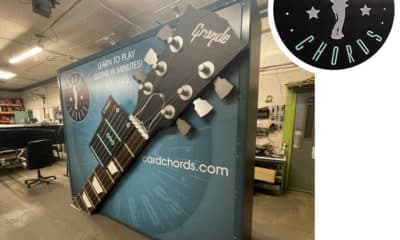
 Best of Wide Format2 months ago
Best of Wide Format2 months ago




